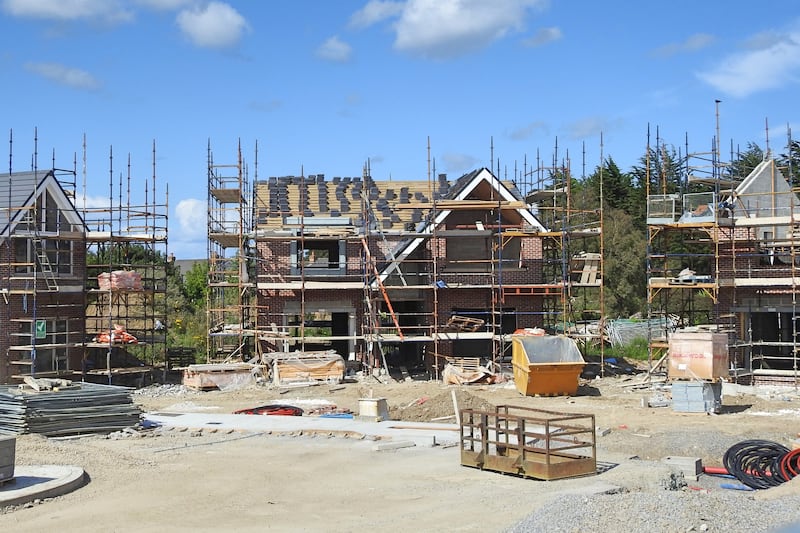The Department of Finance has effectively kiboshed any prospect of a return to the 9 per cent VAT rate for hospitality, suggesting the move would be too costly and was “unjustified”.
In its annual batch of papers aimed at informing upcoming budgetary policy, the department’s Tax Strategy Group (TSG) noted that the tourism and hospitality sector had in recent months been lobbying to have the 9 per cent rate reinstated amid an acceleration in costs.
A further temporary VAT reduction would cost the exchequer €764 million for the full year, the TSG said. Even where the measure is restricted to food and catering services, the estimated full year cost is €545 million, it said.
“This would constitute an enormous fiscal transfer of taxpayers’ money to the sector which the evidence available at present does not support,” it said.
The department also noted that, as inflation eases, the recovery in real disposable income would support demand for contact-intensive services including tourism and hospitality. “In this respect there is no equity case for a lower rate of VAT,” it said.
In a separate paper on income tax, the TSG highlighted the fact that the top 10 per cent of income earners in Ireland would account for almost two-thirds of the income tax and USC (universal social charge) collected this year, making Ireland’s tax system “one of the most progressive” in the world.
The paper indicated that the top 10 per cent of higher earners (those earning over €102,000 annually) would be responsible for 63 per cent of all the income tax and USC collected in 2024, while the top 1 per cent of earners (those earning €290,000 and above) will account for almost a quarter of tax receipts (24.4 per cent).
At the same time, those earning less than €69,000, which represents the bottom 80 per cent of income earners, would contribute 21 per cent of total income tax and USC receipts.
“This raises the question, from an economic and fiscal perspective, as to whether this level of progressivity is appropriate or whether it places an excessive burden on other income earners,” the group said. “The risk is that high marginal tax rates may have adverse consequences inter alia for work incentives and competitiveness including the ability to attract inward investment linked to the availability of high-skilled workers.”

Ireland’s hospitality sector: ‘The customer feels they are not getting value for money’
Income tax, comprising PAYE, USC and other elements, was the largest single source of revenue for the Government last year, generating just under €33 billion, 37 per cent of the Government’s total tax take.
“Given the upward trend in macroeconomic factors such as numbers in employment and wage growth”, total income tax receipts are expected to increase by 5.6 per cent or €1.9 billion in 2024, the TSG said.
It also highlighted a growing a concentration risk within the State’s income tax base, with more than 40 per cent of all receipts now coming from those employed by multinationals (both Irish and foreign-owned).
“A shock to one or more of the small number of high-income sectors could also represent a significant vulnerability for the public finances and one whose impact may not be gradual,” it said.
The group’s income tax paper also costed a number of possible income tax changes. It estimated that indexing the income tax system against wage growth of 4.5 per cent would cost just under €1.2 billion for the full year.
[ Mandatory reporting of all gifts and inheritances under considerationOpens in new window ]
The fact that taxpayers here get dragged into paying significantly more tax when in receipt of a pay rise has long been a source of complaint. The Government is expected to use approximately €1.2 billion of an expected €1.4 billion tax package in the upcoming budget to inflation-proof the income tax system.
By international standards, workers here also end up paying the higher 40 per cent rate at relatively low rates of income.
Increasing standard rate of income tax cut-off point, the threshold at which earners starting paying the top rate, from €42,000 to €43,890 (equivalent to 4.5 per cent wage growth) would cost €465 million.
Alternatively, reducing the top rate of income tax from 40 per cent to 39 per cent would cost the exchequer €525 million a year.
In a separate paper on corporation tax, the group again highlighted the concentration risk at the heart of the business tax base, noting that foreign-owned multinationals accounted for 84 per cent of €23.6 billion collected in 2023, with the 10 largest payers accounting for €12.3 billion (52 per cent of receipts), down from 57 per cent in 2022.
- Sign up for Business push alerts and have the best news, analysis and comment delivered directly to your phone
- Join The Irish Times on WhatsApp and stay up to date
- Our Inside Business podcast is published weekly – Find the latest episode here















